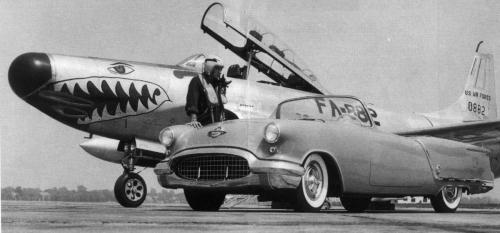
The Oldsmobile Starfire
By Jerry Heasley
The “Starfire” name was first used by Oldsmobile to
denote a prototype car that they displayed to the public in the
1953 Motorama, a General Motors’ motor show. The name was
obviously taken from the Lockheed’s F-94B Starfire jet
fighter, which inspired the look and aerodynamic design of the
prototype car. The
original Starfire was a 5-passenger convertible
that had a fiberglass body, a 200 hp (150 kW) Rocket V8 engine,
and a wraparound windshield like that used on the
top-of-the-line and limited-production 1953 Fiesta 98
convertible. The car became an instant hit and Oldsmobile
decided to take advantage of the name’s popularity.

The Starfire nameplate was then used for the 1954–1956 Ninety- Eight series convertibles, and all 1957 Ninety-Eight series models.
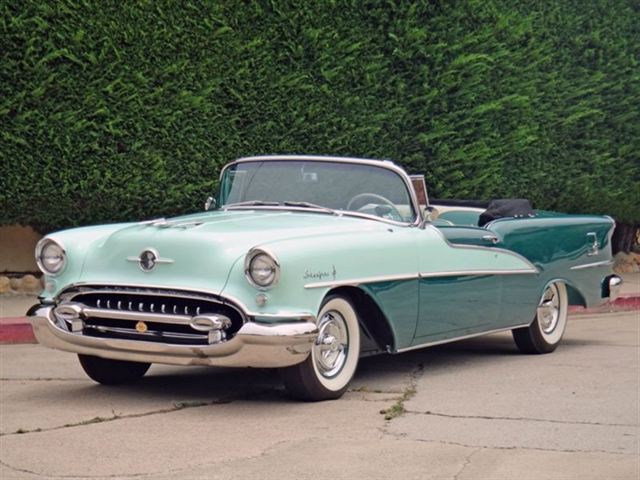
1955 '98' Convertible 'Starfire'
The production and sales of the model continued until 1957. In '57, the name again went on a show car, an Oldsmobile Starfire Holiday coupe, dubbed the Mona Lisa.
In the late 1950s and early 1960s, every American carmaker was eager for a share of the personal luxury car market. Chrysler and GM watched enviously as Ford racked up big sales with its four-seat Thunderbird. So in January 1961 Oldsmobile jumped into the water with a separate Starfire model.
By 1961, the Starfire name had become synonymous with sporty, flashy and big. So the people running the division felt that the Starfire name was a natural for the car they felt could take on the T'Bird. At $4647, the Starfire would also be the biggest and the grandest Olds. Technically, the car was a Super 88 convertible–no Starfire coupes were offered in '61. Although the Starfire didn't have a proprietary body, the way its rival Thunderbird did, the Starfire was instantly recognizable with its unique broad band of brushed aluminum. The aluminum covered both flanks, from just above the tops of the wheel wells to the upper belt line, virtually the entire length of the car. Its name, Starfire, stood out in bold script on both front fenders, at the leading edge of the aluminum bands. These touches kept the Starfire from disappearing into the rest of the Oldsmobile lineup. Since there was just the one body style, production was limited. In 1961 Olds built 7604 Starfires–with four earmarked for export.
Leather-covered, power-adjustable bucket seats were standard equipment. A center console with a "stick control" for the Hydra-matic sat between the seats and the dash sported a tachometer–rare for any big American car of that era.
The tach hinted at something special under the hood: a 330-hp 394-cu.-in. V8 with 10.25:1 compression and a high-lift camshaft. This represented 5 more horsepower than more common Super 88s, which had to do with those cars' 10:1 compression ratio and milder cam.
In '62, Olds added a coupe to the lineup and Starfire became a separate series within the division. However, the Starfire's flame was short lived–it burned out in 1966 to make way for Oldsmobile's new sporty, personal car: the groundbreaking Toronado.
1961 Starfire Convertible
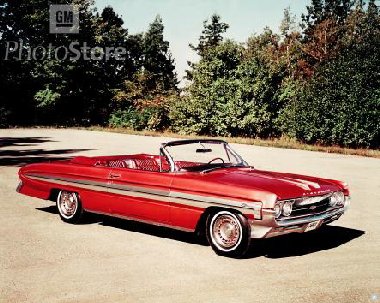
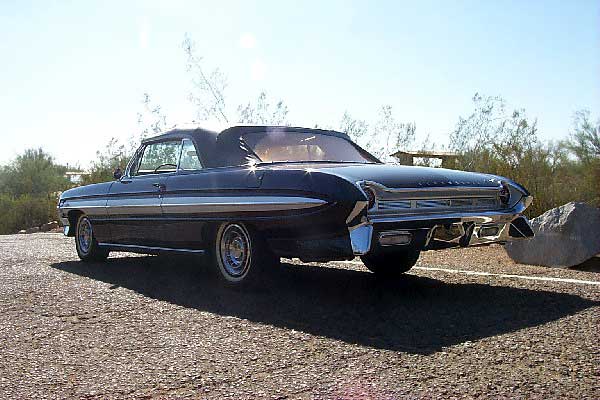
1962 Starfire
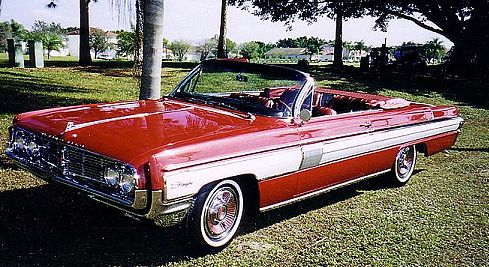
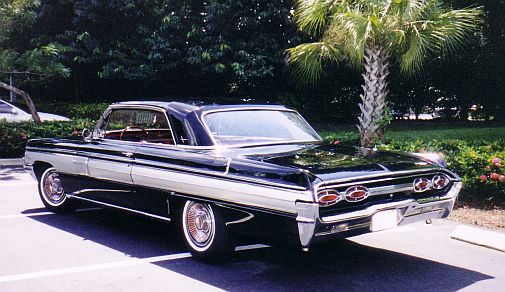
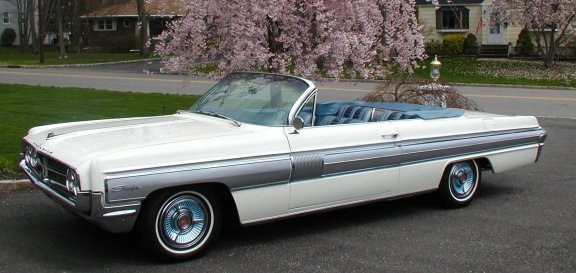
1963
Starfire
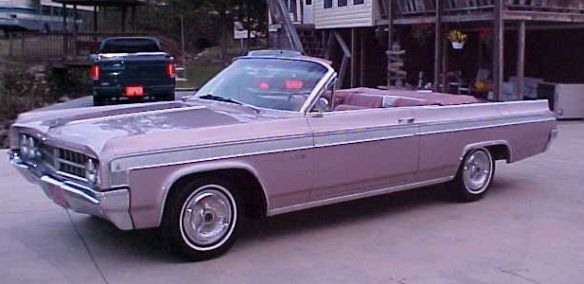
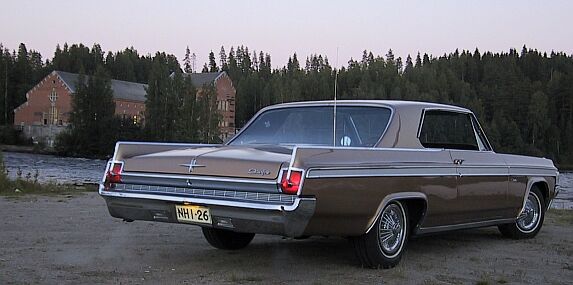
1964 Starfire
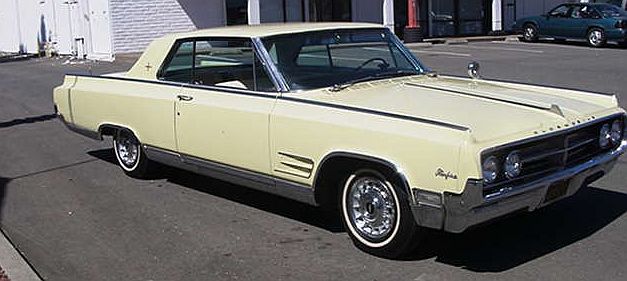
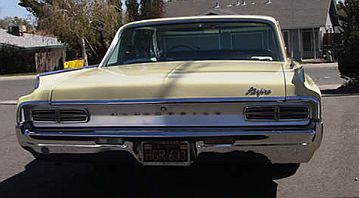
1965 Starfire
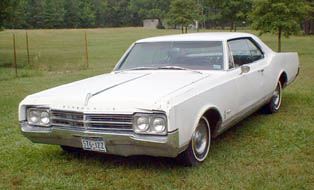

1966 Starfire

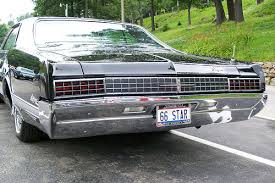
by Bill Vance
Oldsmobile had some significant achievements over its 100- year history, the longest of any American automaker. Its Curved Dash model which bowed in 1901 was the first American volume produced car.
It pioneered the fully automatic "Hydra-Matic" transmission in 1940, and, along with Cadillac, brought out the modern short-stroke, overhead valve "Rocket" V-8 engine in 1949. It introduced turbocharging to production cars with its 1962 F-85 "Jetfire" model, and its 1966 Toronado laid the groundwork for GM's later switch to front-wheel drive.
With the introduction of its 1949 V-8, Oldsmobile also developed a new model by replacing the tired, side-valve six in the Dynamic 76 model with its "Rocket" V-8. In the process it created the sensational Oldsmobile 88, a whole new kind of car, a spiritual reincarnation of the 1932 Ford V-8. It was a modern hot rod, and it immediately became the American performance king. Not surprisingly it started cleaning up on the stock car tracks.
The 88 led to the death of the 76 in 1950, and Oldsmobile carried on with its 88, Super 88 and 98 series until it joined Cadillac and Buick in bringing out an ultra-luxury, limited production model in 1953. This was Oldsmobile's Fiesta, and although it would be produced for one year only, it whetted Oldsmobile appetite for a true luxury offering.
Oldsmobile, like other General Motors divisions, was developing concept, or "dream cars," for GM's annual Motorama extravaganzas. In 1953 it had introduced its fibreglass bodied Starfire, a luxury 5-6-passenger sporty "personal car." Its name was inspired by the Lockheed Starfire fighter plane, and it carried such futurist styling cues as a wraparound windshield, low beltline, and spinner type wheel covers.
The Starfire proved so popular on the show circuit that Oldsmobile introduced the name to its 1954 lineup as the top-of-the-line 98 convertible. It was used on this model until 1957, when it was discontinued.
Then in the middle of the 1961 model year Oldsmobile revived the Starfire name for its entry into the new "personal luxury' market that Ford had so successfully opened up with its four-seater 1958 Thunderbird.
This new Starfire was now a series on its own, not part of the 98 series as previously, although it did share its 3,124 mm (123 in.) wheelbase with the 88. It was 5,385 mm (212 in.) long, and weighed in at a hefty 1,964 kg (4,330 lb). Its styling was strongly influenced by the 98.
As a distinctive model, the Starfire was lavishly equipped, with power steering, brakes, seats and windows. It came with an automatic transmission only, and under the hood was the most potent Olds engine yet, a 330 horsepower, 6.5 litre (395 cu in.) V-8. The interior featured leather seats and a tachometer, the latter to indicate that the Starfire had sporting pretensions. It was the most expensive Oldsmobile.
The '61 Starfire came only as a convertible, but for '62 the line was expanded to include a two-door hardtop coupe. The '62 also enjoyed the complete restyling that Oldsmobile applied across its model line.
Adding the two-door coupe was a good move by Oldsmobile because it became a popular seller. With almost 35,000 Starfire coupes and over 7,000 convertibles sold, 1962 would prove to be the Starfire's best sales year.
New competition entered the fray for 1963 with the Riviera, sister division Buick's attractive new personal luxury car. Also, Oldsmobile didn't help the Starfire's cause by introducing its own new 98 Custom Sports Coupe model, essentially a competitor for the Starfire. The result was a decline in Starfire sales to just over 25,000.
In spite of its size and weight, the Starfire had excellent performance. Car Life magazine (5/63) tested a Hardtop Coupe and reported that the big V-8, now up to 345 horsepower, could accelerate the Starfire from zero to 96 km/h (60 mph) in 8.5 seconds, and reach a top speed of 180 km/h (112 mph). The testers were generally impressed with the Starfire, although their preference was definitely for Oldsmobile's smaller, turbocharged F-85 Jetfire model.
With stiff competition from Buick's Riviera and Ford's Thunderbird, and Oldsmobile's own division, particularly the Cutlass's new 4-4-2 performance package option, Starfire sales continued to slide. It found only 16,163 buyers for 1964.
Sales held at about the 15,000 level for 1965, and then for '66 Oldsmobile brought out its sensational new, front-wheel drive Toronado, and it was all over for the Starfire. The stunning new Toronado immediately assumed the Oldsmobile personal luxury mantle, and the Starfire was quietly discontinued in 1966. Although Oldsmobile would revive the name later on an economy car, the magic was gone.
The early Olds Starfires were big, powerful cars that epitomized their era. They were Oldsmobile's first personal luxury cars, and were every inch an Oldsmobile. To Olds enthusiasts, they were the only real Starfires
The Oldsmobile Starfire was
re-introduced again in 1975, but this time it was not a luxury performance car.
Rather, it was an economy car that was a lot different from the popular Starfire
of the 1960s. It was based on the GM H-body platform, the same platform used by
the Chevrolet Vega, Buick SkyHawk, and Pontiac Sunbird, among others.
![]()
1962